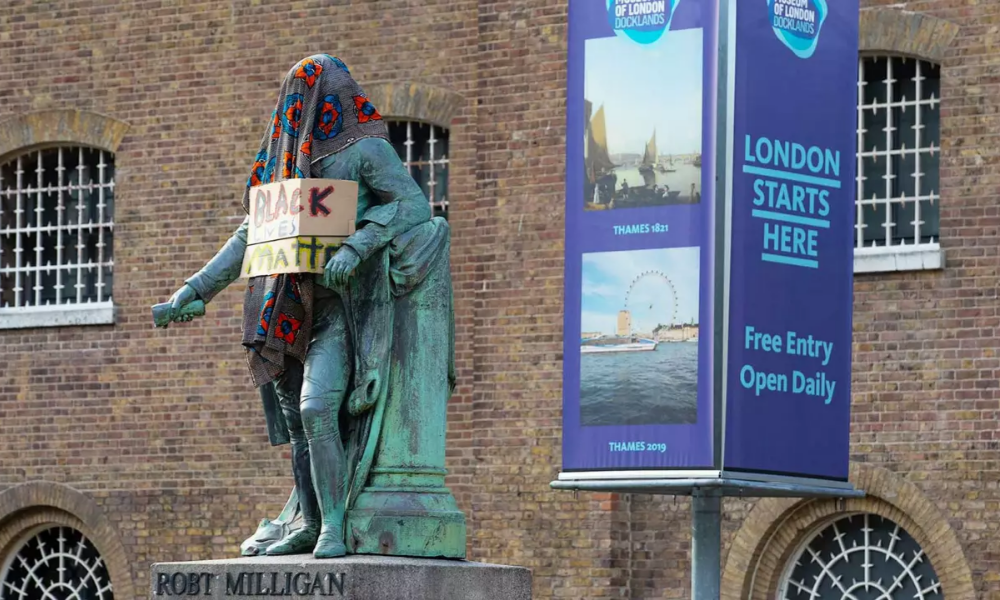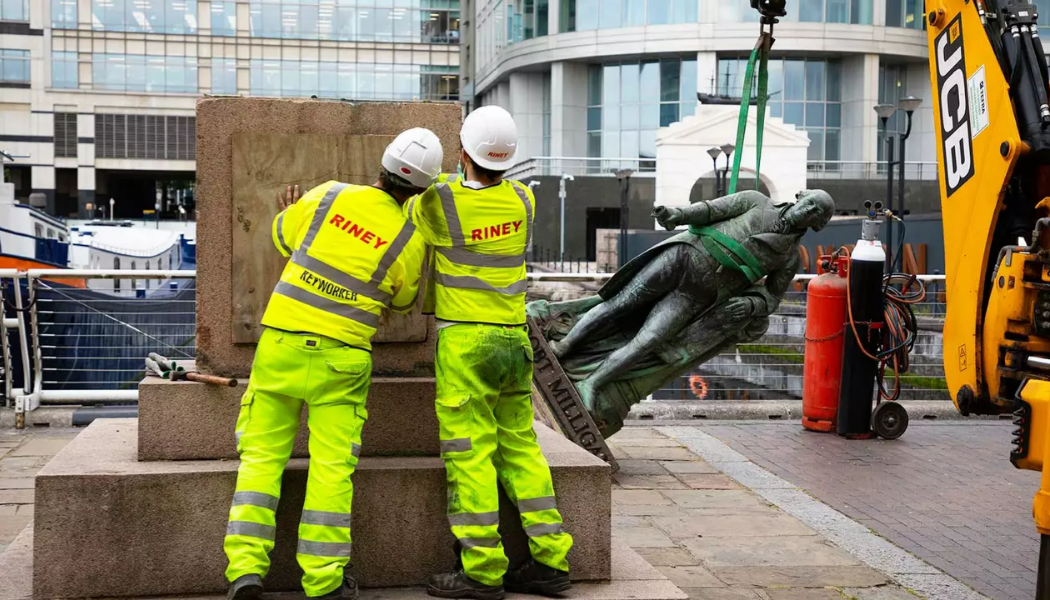A bronze sculpture of the merchant and slave trader Robert Milligan, removed from West India Quay in June 2020, is to be recontextualised as it joins the permanent collections of the Museum of London.
The statue has been given to the Museum of London by the Canal & River Trust and becomes part of the collection from this month.
Originally unveiled after Milligan’s death in 1813, the statue was first placed near the dock offices until 1875, before later being moved to the nearby Main Gate until 1943.
It was placed in storage during the latter part of the Second World War and stayed there for over fifty years before being re-erected in February 1997 outside No.1 Warehouse.
In an information sheet, the Museum of London described the statue as having “stood uncomfortably” outside of the Museum of London Docklands.
As a slave trader and manager of his family’s Jamaican sugar plantations, Milligan’s wealth resulted directly from his trade in enslaved people. By the time of his death, he owned 2 sugar plantations and 526 slaves in Jamaica.
Milligan’s wealth resulted directly from his trade in enslaved people. By the time of his death, he owned 2 sugar plantations and 526 slaves in Jamaica.
In 2020, with the Black Lives Matter movement calling for an end to public monuments honouring slave owners, the museum said it had increased its advocacy for the statue’s removal on the grounds of its historical links to colonial violence and exploitation.
The landmark was detached from its plinth in June 202 after a petition calling for its removal was signed by over 4,000 people.
The local authority, Tower Hamlets, and landowners Canal & River Trust, were tasked with removing the statue and a consortium was formed to discuss the statue’s future. The consortium resulted in its acquisition and the conclusion that the statue should be housed in a museum where it can be fully contextualised.

The Museum of London Docklands, which addresses the history of the transatlantic slave trade, will hold the statue in storage while it consults further with local communities about how best to present it.
A previous consultation on the future of the statue, its plinth and the area’s historical relationship to slavery, found that 76% of people were in favour of the statue being presented in an exhibition. 43% believed it should be moved into storage at the museum and 15% said it should be kept permanently out of public view.
Those in favour of keeping the statue on display suggested that it be shown with context about Milligan’s involvement in the creation of the docks, his links to the slave trade, and the recent Black Lives Matter movement.
“The West India Docks, championed by Milligan using wealth from the slave trade, are a visible reminder of how this history has shaped our city. It is right and important that we acknowledge this in the statue’s story. We will now take time to consult with the local community to decide how best to take this forward as part of our collection,” said a museum spokesperson.










